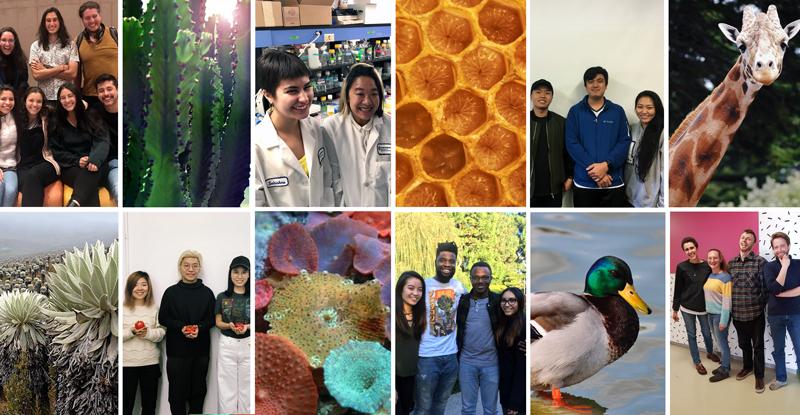Ten Finalist Teams Use Lessons From Nature to Create Radical Solutions to Climate Change Problems
Jun 28, 2019 10:30 AM ET
Campaign:
Biomimicry and Ray of Hope Accelerator

Ten Finalist Teams Use Lessons from Nature to Create Radical Solutions to Clima…
June 28, 2019 /3BL Media/ City-scale water management systems inspired by bryophytes, human small intestines, and a giraffe’s rete mirabilia (a complex network of blood vessels that can absorb surge flows), along with a post-harvest packing system for tomatoes that takes inspiration from cacti and quiver trees and an ocean-plastics collection system inspired by basking sharks and manta rays were some of the winning innovative technologies in a global design competition that seeks solutions to climate-related challenges.
Almost 100 teams from 17 countries entered this year’s Biomimicry Global Design Challenge, submitting nature-inspired inventions to reverse, mitigate, or adapt to climate change. The ten finalist teams receive an invitation to the 2019-20 Biomimicry Launchpad, a program that supports prototyping and eventually a path to commercialization and the potential to win the $100,000 Ray C. Anderson Foundation Ray of Hope Prize®.
Cash prizes were also awarded to the top three student teams, all of whom were among the finalists. First prize and $3,000 went to Bryosoil, a team from Bogotá, which took inspiration from the páramo—a local ecosystem known as the “water factory”—to design a city-scale water management system. The $1,500 second prize went to Rice Age, a team from California State University Long Beach, for their design addressing plastic usage, water loss, and methane emissions in Japanese rice production. The design took inspiration from nasal turbinates to slow water loss and the hexagons of honeycomb to reduce material usage. Tomato’s Home, a team from Pratt University in New York City, will receive the $750 third place prize for their design of a tomato packaging system that reduces post-harvest losses (which are about 50%) in Nigeria and beyond. The team took inspiration from six biological strategies, including the shelf-shading structure of some cacti and the respiratory system of crickets.
Honorable mentions were also given to five teams, several of which tackled specific design prompts about addressing plastic in oceans and rivers.
Read more about the finalists, honorable mentions, and their innovations here.
“Using nature’s blueprints as a starting point can lead to unique insights and the potential for radically innovative designs.” said Megan Schuknecht, Director of Design Challenges at the Biomimicry Institute. “New thinking and new approaches are exactly what we need to tackle climate change and design solutions that are sustainable for all life.Being open to nature’s lessons can help us get there.” The Biomimicry Institute’s Global Design Challenge invites innovators to learn how to use biomimicry—the process of looking to nature for design inspiration—to develop solutions to climate change. Biomimicry is a proven method for creating breakthrough sustainable solutions, and nature offers us time-tested strategies that can be applied to climate change design issues in areas like energy, water, transportation, buildings and infrastructure, food systems, health, and more. The Challenge provides an opportunity to learn biomimicry by applying it in action to pressing environmental issues, and the chance to bring solutions closer to market in the Biomimicry Launchpad. The Ray C. Anderson Foundation has been the primary supporter of the Biomimicry Global Design Challenge since 2014. The founder of Interface, Ray C. Anderson was famously inspired by radical new approaches to centuries-old design and manufacturing techniques, and sought them out when rethinking his $1 billion global carpet tile company’s products and processes. The next round of the Biomimicry Global Design Challenge will open in January 2020, providing a new opportunity for teams to learn about biomimicry, develop solutions to the UN Sustainable Development Goals, and compete for a spot in the Launchpad.. Learn more about the challenge at challenge.biomimicry.org. About the Biomimicry Institute
“Using nature’s blueprints as a starting point can lead to unique insights and the potential for radically innovative designs.” said Megan Schuknecht, Director of Design Challenges at the Biomimicry Institute. “New thinking and new approaches are exactly what we need to tackle climate change and design solutions that are sustainable for all life.Being open to nature’s lessons can help us get there.” The Biomimicry Institute’s Global Design Challenge invites innovators to learn how to use biomimicry—the process of looking to nature for design inspiration—to develop solutions to climate change. Biomimicry is a proven method for creating breakthrough sustainable solutions, and nature offers us time-tested strategies that can be applied to climate change design issues in areas like energy, water, transportation, buildings and infrastructure, food systems, health, and more. The Challenge provides an opportunity to learn biomimicry by applying it in action to pressing environmental issues, and the chance to bring solutions closer to market in the Biomimicry Launchpad. The Ray C. Anderson Foundation has been the primary supporter of the Biomimicry Global Design Challenge since 2014. The founder of Interface, Ray C. Anderson was famously inspired by radical new approaches to centuries-old design and manufacturing techniques, and sought them out when rethinking his $1 billion global carpet tile company’s products and processes. The next round of the Biomimicry Global Design Challenge will open in January 2020, providing a new opportunity for teams to learn about biomimicry, develop solutions to the UN Sustainable Development Goals, and compete for a spot in the Launchpad.. Learn more about the challenge at challenge.biomimicry.org. About the Biomimicry Institute
The Biomimicry Institute is a 501(c)(3) not-for-profit organization that empowers people to seek nature-inspired solutions for a healthy planet.
About Ray C. Anderson Foundation
The Ray C. Anderson Foundation is a 501(c)(3) not-for-profit organization that seeks to promote a sustainable society by supporting and funding educational and project-based initiatives that advance knowledge and innovation in sustainability.

